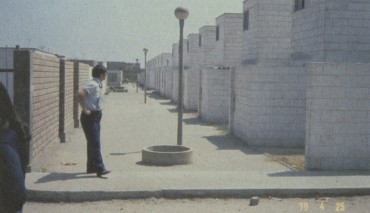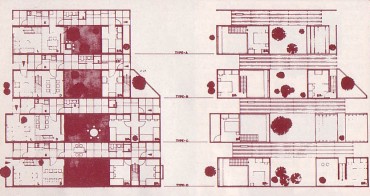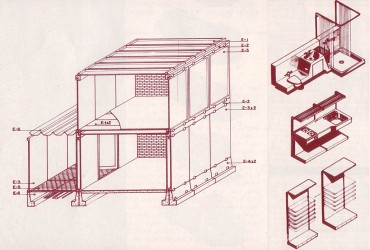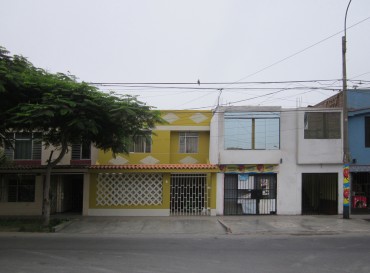Selected Topic
Issue 9 - PREVI revisited – A Contemporary Approach to the Proyecto Experimental de Vivienda in Lima (June 2012)
Show articles
Maki and Kikutake working on Previ (source: Project Japan, Taschen/ Köln, 2011)

Metabolis project, 1979. (source: Project Japan, Taschen/ Köln, 2011)

Ground and first floor plan (source:Architectural Design,4/ 1970, London)

Layout detail (source:Architectural Design,4/ 1970, London)

The PREVI today (Photo: Luis Rodriguez)

The PREVI today (Photo: Luis Rodriguez)
4.7.2012 – Issue 9 - PREVI revisited – Maki Fumihiko , Baumgartner Marianne, Ramis Tomeu – Interviews
GENETIC STRATEGY
Interview with Fumihiko Maki
You worked on the PREVI competition in 1969 with Kisho Kurokawa and Kiyonori Kikutake as members of the Metabolism movement. Did you consider the PREVI as a chance to develop some of the Metabolism principles?
In a retrospect, my answer is yes. But when we were approached by Peter Land to participate in this competition the brief was already written by him and our intention was to do our best to respond to the brief and the particular conditions in Peru. As I remember, being a catholic country , the number of children or the size of the family may change or grow. They warned us that the number of children may become six or seven. So we thought that our housing proposal must be able to respond to growth and Metabolism is concerned about growth as well. It just happened that program itself indicate the possibility of changes.
During 1958 and 1960 you were travelling to some countries to study vernacular prototypes of human settlements. From those trips, the “Group form” theory emerged in contrast to the “Megaform” one established by other members of the Metabolist group. How did the “Group form” approach influence the PREVI?
Group form is the acknowledge of a kind of a genetic form within a larger complex, so our idea was about how to establish a genetic space that could personally grow to respond to the size of a family and so on. Our genetic idea was to establish the court as defined by two elongated elements, one of two floors and the other of one and as the family grows, another floor could be added, but keeping the spine intact. So I am not so sure if the court is a group form but there is definitely a genetic sort of a spatial component, which allowed the growth of family.
The original PREVI competition result was moved from the 3 international and national winners, you among them, to the participation of 26 teams into a new master plan designed by Peter Land . How this decision affected the relation between the 26 housing projects and the public space defined by him?
I don’t know, because when we heard we were one of three winners, naturally we thought the whole space will be divided into three winning schemes. But it didn’t happen like that, instead, all the participants were able to demonstrate their ideas and I think that was a good thing.
Perhaps Mr.Land could answer your question, whether having a twenty-six scheme was better than three, and maybe was better because it was a demonstration of many ideas. Not necessarily the three chosen were the best.
The PREVI has been radically transformed by its inhabitants in programmatic and formal terms during the last 40 years . Your own proposal has experienced many changes. How do you consider the PREVI evolution in relation to your expectations of change through time?
It is beyond my expectation. I anticipated a certain sort of change in growth but when I see that one family has added four floors I got a bit scared because the foundation will not be strong enough to add all that floors. The only concern I have about that are earthquakes. Otherwise, having houses painted in different colors and some additions done by themself is all welcome.
Why look again to the PREVI after 40 years of its construction?
Frankly speaking, I haven’t had the chance to look at it or study carefully the way it has grown. But I have tremendous respect to Peter Land, who initiated this idea, with I must say, missionary zeal and nowadays it is receiving quite a lot of attention. So I think credit should also go to Peter Land more than to us because we just participated in a part of the design process.
Interview by Marianne Baumgartner and Tomeu Ramis, ETH Zurich
Download article as PDF

